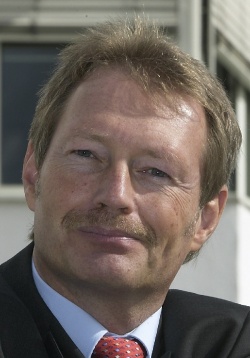Energy contracting for a greener hospital
Modernisation and a financing model facilitate savings of up to 50% in primary energy consumption. Every year, European hospitals face energy costs in the €billions. In Germany, for instance, the sum is €1.7 billion.

According to Ulrich Brickmann, Head of Marketing for Energy Efficiency at Siemens AG, Division Building Technologies, ‘If hospitals could save 20% of this amount the annual, national energy bills could be cut by 300-
400 million.’ That estimate is conservative. ‘With consistent implementation of all energy efficiency measures we could save up to 50% of primary energy. Taking into account that 70-80% of German hospitals have modernisation needs in this area there really is an enormous potential for savings, which has not yet been given enough consideration.’ Helped by Siemens, the Aller-Weser-Clinic in Achim, near Bremen, has achieved fantastic savings.
Following the implementation of the Energy Saving Contracting scheme, energy costs were halved and the volume of electricity purchased from the network was cut by almost 75%. Analysis just before the modernisation showed a quite typical situation. The heating, ventilation and air conditioning systems were much the same as when first installed as well as oversized and designed in a redundant way. The ventilation and air conditioning systems in many areas no longer met occupational safety, hygiene and energy requirements. Heat recovery was minimal, with low efficiency, heat distribution was the same as when the systems were first installed; the cooling fluids used contained a cooling agent that soon will be illegal and the process of heating drinking water was out-dated, to name but a few disadvantages.
‘An important starting point for energy improvements of the conventional, oversized heat distribution network was the recalculation of the heating load, relating to the current utilisation concept, as well as an inspection of the hydraulics,’ Ullrich Brickmann explained. The Siemens engineers calculated that the main flow and return flow pipes, which were based on the original heating requirement, could be downside from a diameter of 250mm to 60-80mm. ‘Although 90/70°C systems were the norm when the buildings were first constructed, in day to day running it transpired that there were significantly lower temperature differences and therefore high volumes of circulating water, i.e. the hot water was being unnecessarily circulated around the building,’ he said.
In the context of the Energy Saving Contracting project the rebuilding of the main distributor was therefore an important measure for a permanent reduction of the heating requirement and pump power. Hence all standard single stage circulation pumps were exchanged for adjustable, high efficiency pumps, exactly sized control valves were fitted and the overflow from flow to return flow was scaled back. Overall, the hydraulic restructuring of the main distribution resulted in half the volume of water being circulated and the pumping power could be significantly reduced. Demand regulation of the initially ‘fully heat-supplied’ internal areas of the hospital, which nowadays only require heating in exceptional cases, also contributed to this reduction.
With this and further measures, it energy costs were cut from just under half a million euros in 2007 to only €280,000 annually. CO2 emissions fell by 55% (-1,444 tons). With this result the Aller-Weser-Clinic is on the way to achieving certification from Friends of the Earth Germany as an energy-saving hospital. Helped by the Siemens AG energy saving partnership, Hospital GmbH, in the Weilheim-Schongau district in Bavaria, also modernised its systems at a cost of around €3 million. ‘We replaced the oilfired steam generators (e.g. those
for kitchens and sterilisation areas) with electric boilers that only operate on demand. Our oilfired steam generators previously remained switched on for 365 days a year. This also necessitated a large amount of maintenance,’ explained Lothar Ragaller, Head of the Department of Technology and Buildings. The hospitals in Weilheim and Schöngau now emit 1,600 fewer tons of CO2 annually and, since 2008, have saved around
€250,000 a year in energy costs.
Describing their joint work as very constructive and innovative, Lothar Ragaller particularly praised the transfer of know-how from Siemens to his department: ‘Actions were always carried out in close consultation with the head of Building Services and the Operations Engineer. Due to subsequent monitoring, both sides were always kept up-to-date with the savings.’
The motivation for a continuous improvement of building energy efficiency is more prominent with the Energy Saving Contracting modernisation and financing concept than with modernisations carried out by an organisation on its own, or with heat contracting offers. ‘Energy Saving Contracting has the big advantage that it can guarantee the hospital annual energy savings according to the individual modernisation plan, along with the high quality of measures implemented. The security that this gives hospitals for their budgets eases the implementation,’ Ullrich Brickmann pointed out.
Within the energy saving partnership Siemens can advance the means for modernisation, which the hospital can pay back over 8-12 years from energy costs saved. Siemens’ offer applies to modernisations and hospital new builds. The Siemens division Building Technologies reports modernising around 30 hospitals in Germany under the Energy Saving Contracting scheme, including university hospitals in Muenster, Heidelberg, Mainz and Halle (Saale).
17.05.2012











